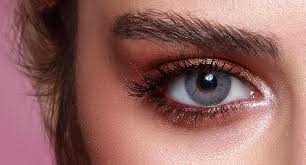The most common materials used in wedding gowns are silk and satin. Silks are breathable, making them especially popular for warm-weather weddings. Satins have a high lustre and smooth hand, making them perfect for formal wear. Brides should always remember to pack the gown carefully for travel or storage to prevent wrinkles.
If you’ve decided that wearing a wedding dress is right for you, your wedding gown will require special attention. The most common materials are silk or satin. Silk is breathable and less likely to wrinkle, but satin has a beautiful sheen. Be sure you understand how to pack your dress for the honeymoon.
Wedding dress fabric is used to make wedding dresses and gowns. In addition to the wedding dress fabric, accessories such as belts, sashes and jackets are also made from this fabric. Laces can be added to the dress material in order to add an extra appeal. The fabrics are available in various colors, designs and styles which can be chosen by the bride. This fabric includes silk and satin fabrics.
Choosing the right fabric for a wedding dress is one of the most important decisions a bride will make. Choosing the best fabric for your dress will ensure that your dress flows smoothly and gracefully, and that it drapes in a way that flatters your body type.
Taffeta. Taffeta is a popular choice for bridal gowns because it’s lightweight, has good drape and is often available in many colors. It’s not terribly expensive, but it can wrinkle and crease.
Satin. Satin is another popular bridal fabric, but only for strapless or spaghetti-strap dresses because satin can get uncomfortably hot if worn over the shoulders during a summer wedding ceremony. Satin isn’t terribly expensive and comes in a variety of colors. It has excellent drape and flow, but isn’t very forgiving.
Silk Chiffon. Chiffon is slightly less expensive than satin and has excellent drape, but it’s not as stiff or crisp as satin and can feel slightly heavy if you choose a thicker version of the fabric. Chiffon wrinkles easily, so you’ll probably want to consider having your gown professionally pressed before the wedding ceremony.
Brides-to-be should think about the look they want their wedding dress to have, and select tulle accordingly. Sheer tulle, for example, looks fabulous when used as an overlay for a full ball gown or high-low skirt on a wedding dress or evening gown. Sheer tulle works well with any elegant style; it drapes beautifully and adds volume without adding weight.
For brides who want a more modest look with less emphasis on the waist, they can use tulle as an underskirt over satin or another sturdy fabric to create billowing layers of fabric that move with each step instead of clinging to the body.








+ There are no comments
Add yours